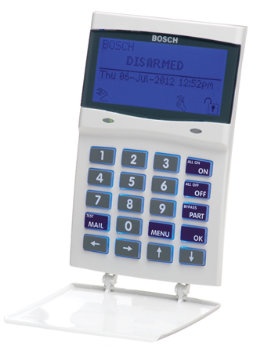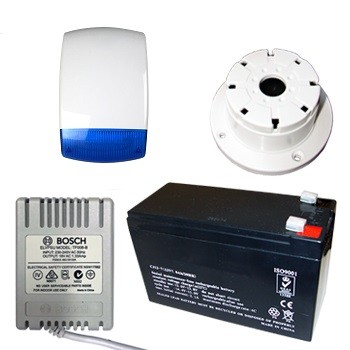What are the components of a home security system?
Home security systems are a great addition to any household that wants to feel a little safer throughout the year. The basic principle of a home security system remains the same, irrelevant of the brand or model of the system - all relevant entry points are to be secure, such as windows and doors, as well as all applicable items within your home such as computers, cash, art, collectables or other personal valuables.
The size of your home also doesn’t change the basic principle, it only alters the number of security components needed to be applied around your house - generally the bigger the home, the more components the control panel needs to monitor a larger area.
Components of a home security system
All components of a security system work together to keep your home and family safe, with each component holding a vital role in the overall scheme of things to ensure an appropriate level of security. Keep in mind however that not all parts are interchangeable, and not all parts are compatible for every model, so if you already have a security system it’s best to speak to the manufacturer to ensure all the correct parts are being used.
If you are searching around for your first security system, make sure you do your research so an emphasis is placed on every component important to you. There are several major components to a home security system, each of which is explained below.

Control panel or keypad
A control panel is one of the most important parts of a home security system. It is the main hub and central connection for your system, kind of like the ‘brain’. It connects all parts together, allowing the arming and disabling of the alarm depending on the circumstances, and also acts as a communication point between you and your alarm company if necessary.


Indoor and outdoor security cameras
Cameras are a crucial part of any home security system. They allow the recording of a particular area of your home and, with technology being so advanced these days, allow you to view those areas straight to your phone, tablet or another device.
Cameras can be visible or concealed, wireless or wired and are capable of doing a plethora of different things, it just depends on what your system (or you) requires.

Smoke Alarms
Most homes are already equipped with smoke detectors, especially around the kitchen and bedroom areas, to ensure everyone is alerted quickly should smoke start filling up your home. There are many different types of smoke detectors, from basic to ones that speak out loud, so the choice is up to you.

Motion Sensors
Motion sensors are placed around your home to alert you if someone is moving around when they shouldn’t be - think motion lighting at your front door or a thief setting off an alarm.
Unwanted motion triggers different components of your security system and alerts your control panel of the disturbance, showing you that there is an intruder. These are different from door and window sensors, which sense when something is opened, as opposed to the motion itself.

Door and Window Sensors
Door and window sensors work on the breaking of a ‘circuit’ that triggers an alarm. Sensors are placed both on the frame of the door/window, as well as on the openings themselves. When closed, the sensors form a ‘closed circuit’ and then, when opened, the circuit is broken and an alarm sounds. Pretty clever stuff.

Yard Signs and Window Stickers
Signs and stickers around your home may seem like a strange addition to this list, but they are the ‘invisible’ layer of protection that you don’t think about. Placing signs and stickers around your property showing that you have a security system in place, acts as a deterrent for thieves who are thinking about robbing your home.

Sirens
When an alarm is tripped by a thief, a siren will, very loudly, go off and alert those in the area of an intruder. The siren is designed to startle any unwanted guests away from your property, as well as act as an attention mechanism to advise those around that there is a thief lurking about.
There are other components, such as a key FOB, glass break detectors, carbon monoxide detectors, panic pendants and a cellular backup unit, however, these do not appear in every home security system. Give our team a call if you are unsure as to how your security system should be structured.
Although there are many DIY tutorials out there showing you how to complete home security systems yourself, it is always highly recommended that you get in a professional to complete the job. This way, you know the completed product is the most effective, efficient and safe option around and will offer you and your family the best security around.
If you have any questions, please feel free to contact us at (07) 3353 3248 or go to our contact page and complete a contact form today.